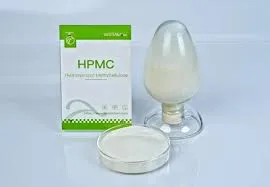
កញ្ញា . 15, 2024 01:31 Back to list
what does hpmc stand for
HPMC, or Hydroxypropyl Methylcellulose, is a versatile and widely used cellulose derivative in various industries, notably in pharmaceuticals, food, and construction. This article delves into what HPMC is, its properties, applications, and significance in different sectors.
Firstly, HPMC is synthesized from naturally occurring cellulose through a series of chemical modifications. The process involves treating cellulose with propylene oxide and methyl chloride, resulting in a product that retains the structural integrity of cellulose while gaining new properties that enhance its functionality. One of the key features of HPMC is its ability to form gels and films, making it a valuable thickening agent, emulsifier, and stabilizer.
.
In the food industry, HPMC serves multiple roles. It acts as a thickener and stabilizer in various products, such as sauces, dressings, and baked goods. Its ability to retain moisture helps improve the texture and shelf-life of food products. Additionally, HPMC is used as a calorie-reducing alternative in low-fat and gluten-free formulations, as it can mimic the texture and mouthfeel of fats and gluten.
what does hpmc stand for

The construction industry also benefits from HPMC's unique properties. It is commonly added to cement-based products like tile adhesives, plasters, and joint compounds. HPMC enhances the workability and adhesion of these materials, allowing for better application and performance. Moreover, its water-retaining abilities contribute to improved curing and reduced cracking in cement mixes, ensuring the durability of construction projects.
Beyond these primary uses, HPMC is also embraced in cosmetics and personal care products. Its film-forming capabilities make it an effective ingredient in lotions, creams, and hair products, where it helps create a smooth application and enhances the overall sensory experience.
The importance of HPMC is further highlighted by its non-toxic and biodegradable properties, making it an attractive option for manufacturers seeking environmentally friendly solutions. As consumers increasingly demand safer and more sustainable products, HPMC's eco-friendliness positions it well for future growth in various markets.
In conclusion, HPMC stands for Hydroxypropyl Methylcellulose, a multifunctional cellulose derivative that plays a crucial role across diverse industries. Its unique properties make it an invaluable resource in pharmaceuticals, food, construction, and personal care, showcasing its versatility and significance. As innovations continue to emerge, HPMC is likely to remain a vital ingredient in improving product quality and functionality, meeting the evolving demands of consumers and industries alike.
-
The Widespread Application of Redispersible Powder in Construction and Building Materials
NewsMay.16,2025
-
The Widespread Application of Hpmc in the Detergent Industry
NewsMay.16,2025
-
The Main Applications of Hydroxyethyl Cellulose in Paints and Coatings
NewsMay.16,2025
-
Mortar Bonding Agent: the Key to Enhancing the Adhesion Between New and Old Mortar Layers and Between Mortar and Different Substrates
NewsMay.16,2025
-
HPMC: Application as a thickener and excipient
NewsMay.16,2025
-
Hec Cellulose Cellulose: Multi functional dispersants and high-efficiency thickeners
NewsMay.16,2025







